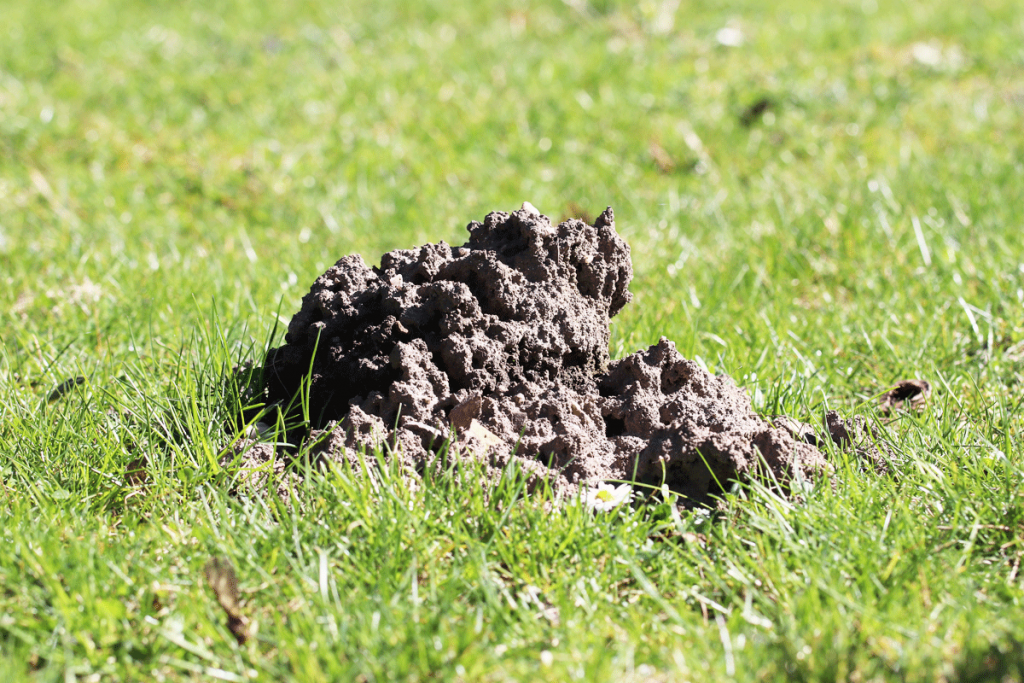If you discover in your garden larger piles of black-brown earth, probably a mole has settled. Many gardeners are not very pleased with the mounds in the garden. But what time of day does the mole actually dig them?
To the point
- Moles live in tunnel systems
- both diurnal and nocturnal
- active for 4 to 5 hours in the morning, afternoon and around midnight
- in winter and spring most mounds
Contents
Characteristics of the mole
In Europe, only the European mole (Talpa europaea) is native. While molehills are fairly easy to spot in the garden, moles are rarely seen. They spend most of their lives in underground tunnels dug by the mole itself. Only occasionally do they leave their tunnel system, for example when there is acute danger. Moles can be characterized by the following criteria:
- cylindrical trunk
- long, pointed snout
- 14 – 16 cm tall incl. short tail
- short, dark gray fur
- shovel-shaped hands with claws
- life span: 3 – 5 years

Note: Moles are under special protection according to §1 of the Federal Species Protection Ordinance and § 44 of the Federal Nature Conservation Act and must not be disturbed, captured or killed.
Tunnel system of the mole
Moles live in underground tunnel systems, close to the earth’s surface. The tunnels show some similarity to those of the vole. The size of the underground systems depends on the food supply and varies from 1000 to 6000 square meters. The individual tunnels are about 100 – 200 meters long and connected with other tunnels. They serve as
- sleeping place
- Nest chamber
- Ventilation system
- Trap pit for microorganisms
When does the mole dig?
Time
Moles have adapted to the darkness underground and therefore do not have a regular day-night rhythm. Instead, they have 3 active waking phases during the day, lasting about 4 to 5 hours. During this time, the small mammals go in search of food and expand their tunnel system as needed. Usually these phases occur in the morning, afternoon and around midnight. However, there is no exact time. This is followed by a resting phase in which the moles sleep.

Note: Moles have a very high food requirement. Therefore, they must eat at least every 12 hours and thus dig. They do not survive longer than 24 hours without food.
Season
Moles do not hibernate and are active all year round. However, the microorganisms on which the mammal feeds move less in winter. In order to continue to find sufficient food, the mole must therefore actively search for it. For this purpose, the mole digs more. Therefore, there are more molehills in winter than in summer. The mammals are also particularly active during the mating season between January and March. In their search for females, male moles dig many new burrows.
Frequently asked questions
Why does the mole make mounds?
Digging tunnels produces a lot of soil. To ensure that the tunnels are well ventilated and can be walked on, the mole transports the excavated earth to the surface. This is how the characteristic mounds are formed.
Can I flatten the mounds?
It is not recommended to flatten the mounds. Since they serve for aeration, moles simply dig new tunnels. Thus, after leveling, you will have more mounds in the garden than before. Rather, carry off the loose soil and use it as a substrate for flower boxes.
Will moles damage my plants?
On the contrary. Moles do not damage roots when digging tunnels. However, they do loosen the soil through the tunnels so that rainwater can drain away better. They also eat garden pests, so they tend to be good for plants.
How do I get rid of a mole?
Stalking, trapping and killing moles is prohibited by law. However, driving them away is allowed. Means that irritate the sensitive olfactory or auditory organs of moles are suitable for this purpose. The best way is to spread a small amount of buttermilk or garlic water in the aisles. Loud knocking on a metal rod stuck in the ground is also effective

